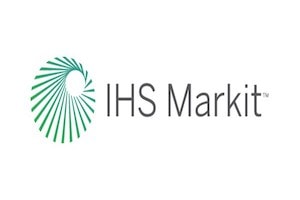You Ask, We Answer: A Comprehensive Review of MySQL – Is the Open-Source Standard Still the Best Choice?
Here at Sirius, we often get asked, "How would you review MySQL today? Is the Community Edition still viable for a serious production environment?" This is a critical question, and one that deserves a clear, honest answer. We understand that purchasing decisions are naturally driven by information and comparison when buying, and reviews are essential for determining the viability of a long-term technology investment.
We want to be fiercely transparent right from the start: MySQL maintains its standing as the world's most widely adopted open-source RDBMS. Its success is built on a foundational dual strategy: the flexibility of the free Community Edition, and the robust, mission-critical capabilities of its proprietary commercial editions. The review of MySQL is less about its core functionality (which is largely proven) and more about the strategic trade-off an organization must make between its zero-cost license and the necessary investment—either in specialized proprietary features or external expertise—required to achieve enterprise-grade performance, scalability, and compliance.
This article will break down the essential components of MySQL, reviewing its architectural foundation, its commercial options, and the critical performance and security features that determine its true strategic value. Our goal is to serve as an unbiased expert and thought leader by openly discussing this review, enabling you to make the most informed decision possible for your specific needs.
Section 1: Reviewing the Core Architecture and Foundational Strengths
MySQL’s ability to serve equally well as the standard backend for rapid development (the LAMP stack) and as a highly scalable transactional engine (OLTP) utilized by global enterprises is its primary strength.
1. The Power of the Pluggable Storage Engine
The most defining architectural feature of MySQL is its pluggable storage engine API. This design decouples the SQL parser and optimization layer from the underlying data storage mechanism, offering immense flexibility.
- InnoDB Dominance: The InnoDB engine is the absolute default for modern, production-grade applications. It is the transactional storage engine that adheres fully to the ACID model (Atomicity, Consistency, Isolation, Durability), which is critical for ensuring data integrity, especially in applications involving monetary or inventory transactions.
- Concurrency Advantage: InnoDB achieves superior concurrency in write-intensive workloads by utilizing Row-Level Locking. This prevents performance bottlenecks by allowing multiple transactions to write to different rows simultaneously, unlike the legacy MyISAM engine, which relies on less concurrent Table-Level Locking.
- Workload Suitability: MySQL performs exceptionally well for high-frequency read operations, making it highly effective for general-purpose Online Transaction Processing (OLTP) and heavily trafficked websites.
2. Community vs. Enterprise: The Dual Licensing Model
MySQL operates under a crucial dual licensing framework. The core software, MySQL Community Server, is available as free, open-source software under the GNU General Public License (GPLv2). However, the proprietary commercial licenses (Standard, Enterprise, and Cluster) provide access to essential enterprise features, which creates a commercial trade-off for organizations.
- Community Edition Review: Suitable for development, testing, and small-scale applications. Its primary restriction is the lack of official technical assistance and crucial advanced features necessary for enterprise environments, such as security advancements and integrated performance monitoring.
- Enterprise Edition Review: Designed for business-critical applications requiring the highest security, reliability, and uptime. It reduces financial risk and complexity by offering a comprehensive proprietary stack.
Section 2: Reviewing Enterprise Necessity and Feature Lock-in
For large-scale, regulated, or high-growth organizations, the Community Edition's initial TCO advantage is offset by the operational requirement for specialized proprietary features that address critical architectural limitations.
1. Performance and Scalability: The Thread Pool Plugin
MySQL’s architecture is fundamentally single-node, forcing organizations seeking massive read-write scale to undertake complex, manual sharding efforts. The Enterprise Edition strategically addresses core limitations through specific performance plugins:
- The Thread Pool Plugin: This enhanced connection and thread management system is reserved for the Enterprise Edition. This feature is essential for scaling highly concurrent transactional systems, as it can deliver up to 3 $\times$ better performance compared to the Community Edition under high concurrency workloads. For enterprises managing heavy traffic, this performance gain translates the license cost into a hardware efficiency measure.
2. Security and Compliance: The Enterprise Firewall
Achieving regulatory compliance (such as GDPR, HIPAA, and PCI DSS) often necessitates advanced security features available only in the Enterprise Edition.
- MySQL Enterprise Firewall: Provides a real-time, policy-based security layer offering critical protection against threats like SQL injection attacks.
- Transparent Data Encryption (TDE): Included in the Enterprise Edition for data-at-rest encryption.
- Audit Logging and Data Masking: Essential for demonstrating continuous compliance and risk management to regulatory bodies.
The strategic decision by Oracle to restrict these essential security and performance features to commercial tiers effectively forces large, high-growth, or regulated organizations into a commercial relationship, leading to vendor lock-in.
Section 3: Reviewing High Availability (HA) and Scalability Solutions
The review of MySQL's HA/DR solutions confirms that continuous operations in globally distributed environments require specialized solutions beyond the core open-source product.
1. Integrated HA (LAN Environments)
MySQL’s integrated solution for HA is the InnoDB Cluster, built upon Group Replication. This native approach provides automated failover and consensus among server instances, ensuring strong consistency.
- Limitation: This technology is designed primarily for Local Area Network (LAN) environments. Deploying a single InnoDB Cluster over a Wide Area Network (WAN) introduces high latency that has a prohibitive impact on write performance due to the requirements for transactional consensus.
2. Geo-Distributed DR (WAN Environments)
For disaster tolerance across multiple geographic sites, Oracle offers InnoDB ClusterSet.
- Compromise: ClusterSet links clusters via asynchronous replication, prioritizing availability over strict, real-time consistency to achieve disaster tolerance across distance. Critically, ClusterSet does not automatically fail over to a replica cluster; the process requires intervention, meaning that cross-data center DR is an operational procedure requiring sophisticated management, which introduces potential human error during a catastrophic incident.
3. Extreme Resilience
For mission-critical applications demanding linear scalability, the MySQL NDB Cluster (part of the Cluster Carrier Grade Edition) provides a shared-nothing, distributed database architecture. This system supports active-active geographical replication between clusters, delivering real-time access with transactional consistency.
Section 4: Reviewing the Ecosystem and Commercial Support Strategy
The operational viability of MySQL is highly dependent on the choice of commercial support, which acts as a strategic risk mitigation measure.
3. Governance and Divergence Risk
Oracle’s acquisition of MySQL led directly to the creation of the MariaDB fork. Oracle’s accelerated development efforts are concentrated on the commercial MySQL HeatWave platform, which integrates OLTP and OLAP in one service.
- Risk: This divergence means enterprises relying on the open-source GPL core must either accept the risk that the core product will evolve slowly or face strategic lock-in by adopting the proprietary cloud solution.
Conclusion: MySQL’s Role and Final Recommendation
The review confirms that MySQL is a best-in-class database system for specific workloads, particularly high-throughput, simple Online Transactional Processing (OLTP) applications and those prioritizing development simplicity and a low overhead. Its foundational open-source appeal is strong, especially for applications dominated by read requests.
However, the necessity of comparison content (Reviews) is driven by the fact that its single-node architecture and conditional features impose significant constraints.
Final Recommendation
MySQL should be actively chosen only for its core strengths—simplicity and high read performance—but should be consciously bypassed in favor of specialized competitors when the application requires:
- Guaranteed High Consistency and Concurrency: Choose PostgreSQL for its intrinsic MVCC capability and guaranteed ACID compliance.
- Mandated Auditing/Compliance Features: Choose MariaDB for its native System-Versioned Tables.
- Elastic, Global Scaling: Choose CockroachDB (Distributed SQL) for native horizontal scaling and strong consistency across distributed nodes.
For organizations choosing MySQL, the Enterprise Edition license should be viewed not as a simple expense, but as a mandatory investment in risk mitigation to achieve required regulatory compliance and optimal performance (via the Thread Pool Plugin). The true cost of MySQL is the cost of managing its architectural trade-offs, making the choice of commercial support (Oracle vs. Independent Specialist) the final, critical determinant of long-term operational success.
















































